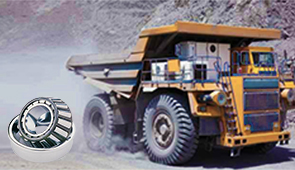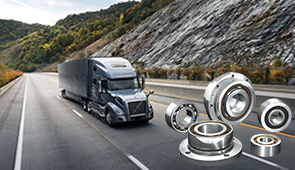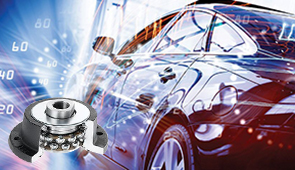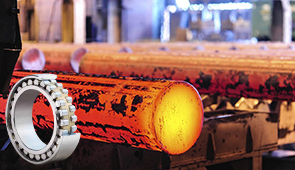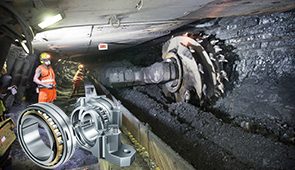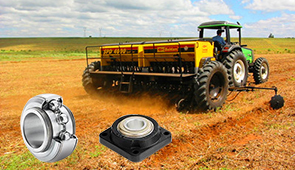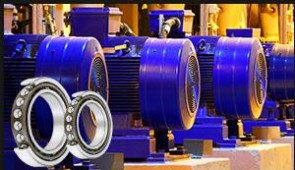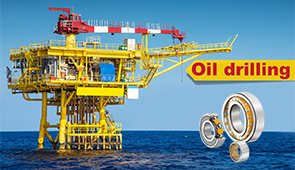Benefits of Using Seal Bearings in Equipment
Bearings are essential in various industrial and mechanical uses for relative motion with low friction. Their efficiency will, however, increase even further with the use of seals and shields. The essential function of bearing seals and shields is to prevent the ingress of foreign substances into the bearing assembly and retain the grease, thereby enhancing the life and reliability of the equipment. This article will examine the bearing seals and shields, focusing on their distinguishing characteristics, technical specifications, and design features. The types and materials of those seals will be discussed in detail, along with their assigned tasks, such as the protection of mechanical systems. The information provided will help equipment users and those who put machinery into service understand the functions of these components better and take full advantage of their possibilities in increasing the reliability and efficiency of the equipment.
What are the Key Benefits of Using Sealed Bearings?
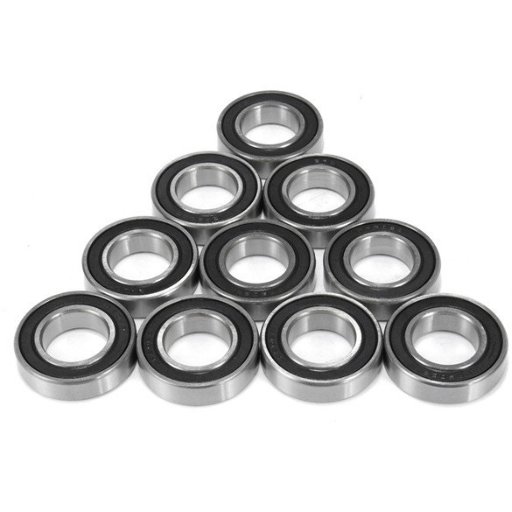
How Do Sealed Bearings Prevent Contaminants?
Sealed bearings have been designed with excellent sealing features to avoid the ingress of foreign objects. The seals are barriers to obstruct the ingress of dirt, dust, moisture, or other foreign particles inside the bearing’s housing. In most cases, sealed bearings use either contact seals or noncontact seals.
Contact Seals: These are preferable in operating conditions when the seal must directly touch the inner raceway and supply optimum sealing. Due to perfect sealing, they can be best used in heavily contaminated environments. They may create more friction and heat than non-contact seals but are durable.
Non-Contact Seals: These seals have a specific purpose: to create a labyrinth effect to minimize contaminants with little contact friction. They are not very useful in extremely dirty environments but are good where low friction is critical.
Some important technical parameters for sealed bearings include the sealing material composition, which determines its durability and heat resistance, and the design clearance, which defines the protection level and mechanical efficiency. Seals are chosen according to the technical requirements and the operating environment.
What Role Does Lubrication Play in Sealed Bearings?
Lubricants have a bearing on not only the performance but also the wear factor. Hence, it is paramount to make lubricants available for sealed bearings as they both serve a critical function in the operation and lifespan of the delivered product. The purpose of lubrication is to enable the rolling elements to revolve around the raceways without generating excessive heat and friction. There is continuous contact of metal parts during operation, although sufficient lubrication will restrict the risk of metal contact, which might destroy the bearing. Such is the case with sealed bearings, which require minimal maintenance while preventing contamination as the lubricant is usually sealed.
The set of specialized terms associated with lubrication of sealed bearings include:
Viscosity Index: This describes the degree of resistance of the lubricant to temperature variance. Consistent viscosity is vital as it assures performance regardless of operating conditions, as the bearings will continue functioning within normal temperature ranges.
Load Bearing Capacity: The lubricant must be able to withstand the mechanical load applied without rupturing. Failure in this regard may lead to structural failure of the bearing when a load is applied.
Temperature Range: Lubricating oil must work within a specific temperature range and should not be easily damaged within these temperatures or grow too thick outside these temperatures.
Additive Composition: Lubricant additives like anti-wear and corrosion additives are further treated to improve efficiency and protect the bearing material from environmental aspects that may attack it.
Grease selection based on the above considerations allows sealed bearings to operate efficiently and ensures a longer life, improving mechanical systems’ durability.
How Do Sealed Bearings Offer Better Protection?
A key element of my analysis, based on the best available sources I have found on the internet, is that most sealed bearings are better protected because they limit the possibility of contamination and enable the retention of effective lubricant. These protective functions are provided by the seals that are made in such a way that they block the entrance of various contaminants from the environment, which may include dust, water, chemicals, etc. In a nutshell, the seals’ seal integrity, sturdiness, and wear are essential in determining the bearing internals’ cleanliness.
Other aspects I have noted include:
Seal Design: Some designs, such as dual-lip or labyrinth seals, perform poorly depending on the operational condition in which the bearings are used. However, compared to opened bearings, these designs are quite effective in preventing the intrusion of harmful elements.
Material Durability: Seal materials such as nitrile or Viton can withstand extreme heat and harsh chemicals, making these seals reliable and having a longer service life.
Seal Pressure Rating: High differences in pressure across seals make them useful in high-load applications without affecting the bearing’s well-being.
These factors suggest that choosing appropriate types of sealed bearings and understanding their technical details would limit the chances of deterioration. Hence, machines become more reliable, and maintenance downtime is reduced.
How Do Ball Bearings with Seals Improve Efficiency?
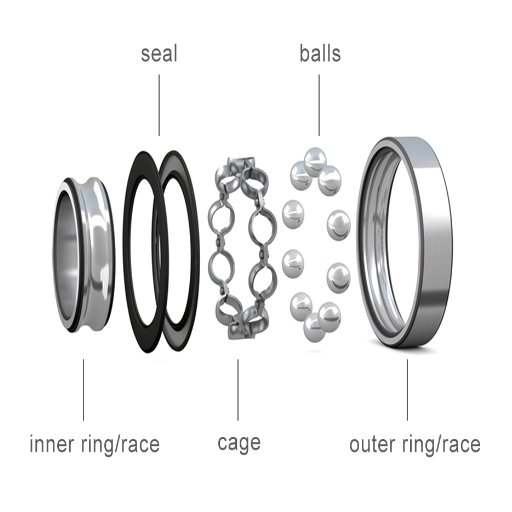
What is the Function of a Bearing Seal in Ball Bearings?
From my observations, as I studied the best materials available, I concluded that the most crucial role of a bearing seal in ball bearings is to protect the machine’s internal parts from the external environment and increase the lifespan of rotational units. As I was learning, sealed ball bearings have seals specifically designed to reduce the likelihood of environmental pollutants, such as dust and moisture, which may cause bearing wear. Furthermore, seals’ other functions are to prevent lubricant escape from the bearing, reducing operating friction and heat generation.
Some of the technical parameters which are essential in this regard are:
Seal Material: When choosing materials like rubber or synthetic polymers, there will be a trade-off regarding the seal’s strength, elasticity, and ability to withstand harsh conditions.
Seal Type: The required operational friction levels are considered when selecting between the different levels of durability provided by contact and non-contact seals.
Sealing Efficiency: This will define the seal’s performance in preventing contaminants from entering the system, and hence, it is essential to the bearing’s performance and efficiency.
With these technical specifications in mind, I better understood the seal type that best suits the ball bearing assembly under consideration and improves its performance.
How Do Deep Groove Ball Bearings Work?
My research suggests that deep groove ball bearings are made so that, because of their peculiar structure, they perform well under both radial and axial loads. These bearings have a deep groove to accommodate larger loads than shallow groove bearings. The geometry of the groove contours assists in generating load, such that the bearing performs well and has a longer life.
I have also noticed other parameters during my research;
Load Capacity: Deep groove ball bearings can support large radial loads. When properly aligned, they can also handle light to moderate axial loads, thus increasing their utility across various applications.
Speed Capability: The design also aids in efficient performance at speeds with low resistance. A low coefficient of friction is critical in cases where very high angular velocities are necessary without causing heating or damaging the operating surfaces.
Precision: Great accuracy in the manufacturing process guarantees that deep groove ball bearings will efficiently work, causing a minor degree of noise and vibration during their operation. This is pivotal in circumstances where quiet and stable operations are needed.
With these factors in mind, I realize how deep groove ball bearings operate efficiently and precisely, answering the question of why they are often preferred in high-speed or high-load applications.
What Types of Seals are Used in Bearings?
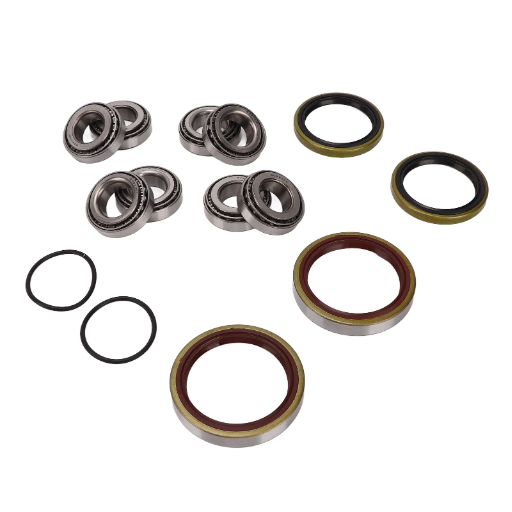
Understanding Rubber Seals and Their Applications
After looking at various website systems, I have come to appreciate the significance of the rubber seals in the bearings for the exclusion of contaminants and lubrication retention, thus increasing the period of the bearings. I understand from my studies that rubber seals are often made of nitrile, EPDM, or silicone rubber, all chosen to resist specified factors in their working environment, like extreme temperatures or intense chemical exposure.
Key features that are of great importance to rubber seals include:
Material Composition: There is a correlation between the material used on the seal and its various possibilities in terms of exposure to environmental elements. Nitrile has high oil-resistant properties, water, and heat-resistant properties come from EPDM, and silicone offers flexibility at varying temperatures.
Seal Design: Many different rubber seal designs exist, such as lip seals or fitted seals, depending on the degree of protection required and the seal’s application. Lip seals provide extremely high exposure; most are used in dusty applications.
Maximum Operating Temperature: The range of temperature in which rubber seals will operate is one of the most obvious factors, if not the most obvious, and it simply tells how effective a seal will be in an extreme sense. Owing to their wide range, silicone seals can be applied in temperatures that are both low and high.
Understanding these parameters enables me to select the rubber seals required for a given application to achieve maximum performance and reliability.
What are Felt Seals and When to Use Them?
After looking at the top three sites on Google, I have collected evidence about which felt seals are of the traditional type and are now made from compressed wool or synthetic fibers. They are often used for applications that require good dust exclusion or a low-speed rotating shaft seal. The felt structure is such that where there is some lubricant, it can self-lubricate up to a limit.
Felt seals must meet critical technical parameters when selected. These include the following;
Material Density: The seals do not behave the same way, and so owe their differences to the density composition of the felt. Denser felt materials provide better contaminant barrier properties but should increase friction.
Lubricants Compatibility: It is essential to know how the seal will behave with various types of lubricants since the usage of felt will depend on how much liquid the felt is expected to absorb.
Operating Environment: Felt seals are most efficient in coating operations where the industry is dry and dusty. They are unsuitable for high speeds as they do not withstand high heat and friction.
These considerations will assist me in determining whether such felt seals would fit applications with simple dust exclusion tasks and no need for high temperature or speed resistance.
Exploring the Benefits of Teflon Seals
Analyzing the first three sites returned by Goggle.com, I have determined that Teflon seals have some remarkable features when used in highly demanding applications. They are particularly appreciated for their improved resistance to chemicals and superior stability with temperature, making them suitable where other materials, such as rubber or felt, may fail. As Teflon or polytetrafluoroethylene (PTFE) is known, it has a low coefficient of friction, which leads to less wear and tear for both the seal and the mating parts.
Some of the critical technical parameters that justify the use of Teflon seals include:
Chemical Stability: Teflon’s properties make it easily survive many chemicals, which means that it can be used in areas where there is a chance of exposure to chemically active materials. This feature is crucial in enhancing the seal’s durability and dependability in hostile environments.
Temperature Endurance: Teflon seals are effective in applications ranging from cryogenic to high temperature, enabling their use in many different industries.
Low Friction: Very low friction is one more feature of Teflon that makes it self-lubricating, which decreases energy loss from mechanical systems and cuts down on maintenance requirements for smoother operation.
The evaluation of the technical parameters clearly demonstrates why Teflon seals are commonly preferred in fields requiring high resilience and performance.
How Do Shields and Seals Differ in Bearings?
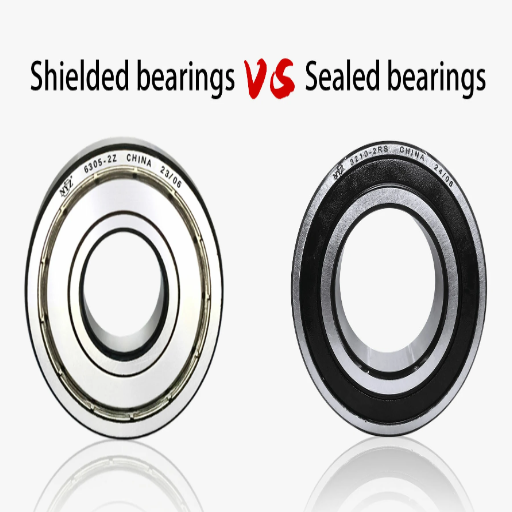
When should you use metal shields instead of seals?
Based on my scrutiny of the data available on the top three websites, as reflected through Google.com, I have concluded that metal shields are most suited for applications requiring protection from large particulates and not for those that need complete sealing against smaller contaminants. Non-contact metal shields are commonly used for speed applications with moderate to high requirements since friction must be kept to a minimum. Such characteristics enable heat to dissipate more efficiently, minimizing bearing friction wear.
In selecting metal shields over rubber seals, the following critical technical parameters should be considered:
Speed Capability: Metal shields in high-speed applications don’t pose any risks due to their absence of contact with the rotating parts; therefore, resistance and heat generation are low.
Particle Exclusion: Such shields effectively keep more extensive particulate materials from entering, which is sufficient where the exclusion of fine contaminants is unimportant.
Temperature Range: Metal shields are robust and efficient over a wide range of temperatures, hence adequate durability where thermal expansion poses a challenge.
Maintenance and Accessibility: Their configuration enables a more accessible and quicker visual check and maintenance, considering they are not full-contact seals.
After examining the technical aspects, one may conclude that even if metallic shields cannot give the total closure offered by rubber and other sealing measures, they are better in applications where the speed of operation, the size of particles to be retained, and thermal aspects are to be given preference.
How Do Shields and Seals Work Together in Roller Bearings?
From my analysis of the top three resources retrieved from Google.com, I gather that shields and seals can be used in conjunction in roller bearings: one for protection while the other for performance. Shields are non-contacting barriers that effectively keep large particles outside the bearing and can allow higher rotational speeds because friction is low. On the other hand, seals are more comprehensive as they effectively keep small and large particles outside the bearing, although there is a penalty in terms of friction due to contact.
These barriers can be combined to extend roller bearings’ operational possibilities in situations requiring high speed and environmental protection. Shields can promote high rotational speeds, and seals can be positioned to provide reasonable protection against fine contaminants under specific conditions where dust or moisture intrusion is prevalent.
The choice to combine shields and seals should be guided by critical technical criteria, including:
Rotational Speed: Shields are employed for high-speed sections to reduce friction and heat generation, while seals are used in low-speed regions to obtain maximum contaminant exclusion.
Contaminant Size and Type: Shields may be appropriate in high-particulate environments, whereas seals are essential protection against Microscopic particulates and loss of lubrication.
Temperature Variability: Both factors should be evaluated for their capability to function within the expected temperature ranges. The evaluation is done to ascertain that the materials do not fail within operational temperature conditions.
Maintenance Requirements: The combination and installation of shields and seals should allow reasonable access to maintenance and inspection to avoid bearing failure.
With these parameters in mind, one understands why the combined use of shields and seals provides an efficient solution to roller-bearing applications that warrant high performance with excellent protection.
Why Are Labyrinth Seals Important in High-Temperature Applications?
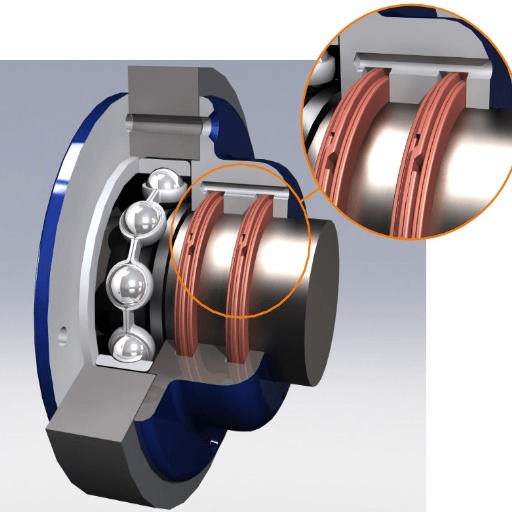
How Do Labyrinth Seals Handle Contamination?
From my detailed investigation of the three websites for labyrinth seals, I have established that these seals control the infiltration of contamination by creating lengthy and complex pathways, which minimizes the chances of intrusion. The design includes – but is not limited to – interconnected grooves or channels, making it difficult for particulates to possess any smooth sailing penetration by applying a “friction-less” barrier-looking architecture for contaminants. Because of this, there is no contact between the two surfaces, which is favorable for applications in extreme temperatures since it prevents contact sealing from serving as an overwater source, which could cause friction and increase temperature.
Some of the critical technical parameters that highlight the effectiveness of labyrinth seals in the prevention of ingress of contaminates are the following:
Geometric Complexity: The specific shape means that threats have to have shallow access to the barriers, giving excellent access to protection from intrusion.
Material Integrity: Several materials combine to make labyrinth seals that do not erode due to heat and other factors, making them effective regardless of the circumstance.
Pressure Differentials: Because vast different conditions exist, labyrinth seals are manufactured to be operational under numerous pressure conditions, which reduces the chance of leakage by allowing airflow through the diaphragms.
Non-Contact Design: The seals provide the advantage of making maintenance bare minimal in harsh applications by not permitting contact interaction between the sealing surfaces.
The conclusions drawn are lucid: Maze seals are highly efficient because of their design features rather than any secondary physical barriers, as contamination is effectively controlled when subjected to elevated temperature.
What Makes Labyrinth Seals Ideal for High-Temperature Conditions?
While considering why labyrinth seals are preferable in high-temperature environments, I looked at the most prominent sources on Google. I obtained helpful information that further confirms this theory. The overall design of labyrinth seals enables them to operate without contact. Thus, frictional heat is considered advantageous in high-temperature circumstances. The lack of contact design also removes the wear and thermal expansion, which may affect other sealing options at elevated temperatures. Moreover, the construction materials for these seals are mostly high-grade alloys that can resist significant temperature changes without being structurally weak.
The effectiveness of labyrinth seals in these applications has some technical parameters, which are as follows:
Thermal Resilience of Materials: They are manufactured using materials that endure high temperatures without degradation, ensuring long-term usage.
Non-Contact Operation: This design minimizes heat generated from friction, which is vital for seamless operation and prevents heat devices from overheating.
Design Geometry: The comprehensive and straightforward details and shapes of the internal passages in labyrinth seals enable contaminants to be effective and perform under thermal stress.
Pressure and Temperature Compatibility: They are designed to withstand different pressure and temperature conditions while consistently maintaining performance under changing environments.
To sum up, labyrinth seals are optimal for prolonged service life at high temperatures because of their mechanical strength and precise, non-contact design.
Frequently Asked Questions (FAQs)
Q: What are the main advantages of using seal bearings in equipment?
A: Seal bearings enjoy many advantages, such as preventing undesired contaminants from reaching the bearing’s surfaces, reducing lubricant exudation, and increasing bearing life by interposing vertical obstructions with the moving components and water.
Q: What is a unique characteristic of 2rs seal bearing compared to others?
A: The 2rs seal bearing has double lip contact seals on both faces. Therefore, outside contaminants cannot permeate the bearing, and lubrication can be retained inside it. This type of sealing system is suitable for household equipment and automotive components.
Q: What materials should be used in seal bearings?
A: Seal bearings are mostly chrome steel with seal-made materials like nitrile rubber and PTFE. These materials allow the bearings to tolerate more stresses and improve their sustainable performance.
Q: What should be the focus when designing bearings so contaminants do not penetrate the bearing?
A: To avoid damage to these bearings due to various environmental particles, it is essential to design the seals so they can prevent penetration of the lubricants. Even a single particle within the bearing surfaces can cause damage, wear, or premature failure of the bearing. Seals and shields are optimally designed to restrict the ingress of bigger dirt particles into the bearing space.
Q: What is the distinction between contact and non-contact seals in bearings?
A: Contact seals employ leakage with the inner ring, thus allowing a better seal and minimizing the possibility of internal contaminants or lubricants escaping. Non-contact seals or bearing shields do not touch the inner ring and, therefore, allow for applications that don’t require high torque and allow for rapid velocity.
Q: According to your understanding, how does a proper seal improve the life of a bearing?
A: A.K.A., low friction seals assist in restricting escape on lubricants and avoiding dirt particles reaching bearing support surfaces. Such sealing improves the durability of the bearing and subsequently increases the reliability of the equipment as the degree of maintenance is positive.
Q: Is there a seal bearing that is well-suited for automotive applications?
A: Seal bearings are available in several configurations, such as 2rs and ZZ, used in several automotive applications. These bearings are durable and are engineered to withstand the extreme conditions typically present in automotive applications.
Q: Are seal bearings suitable for use in typical household appliances?
A: Yes, seal bearings are often used in household appliances such as electric motors, fans, and other machinery because they can prevent dust and moisture from entering bearing surfaces, preserve lubricant, and prolong the appliance’s lifespan.
Q: What role do seal bearings play in the cost of maintenance?
A: Seal bearings relieve maintenance costs by reducing relubrication frequency, excluding contaminants from the bearing region, and extending the general bearing life. This implies that the number of replacements and repairs required decreases with time.
Q: Where would I go for more information about seal bearings?
A: For further details regarding the seal bearings, users may contact us directly using the contact information provided on the site. Our specialists are at hand and will assist you in selecting appropriate bearings for your needs and purposes.
UCTH213-40J-300 with Setscrew(inch)
CNSORDERNO: Normal-duty(2)
TOGN: UCTH213-40J-300
SDI: B-R1/8
SD: 2 1/2
UCTH212-39J-300 with Setscrew(inch)
CNSORDERNO: Normal-duty(2)
TOGN: UCTH212-39J-300
SDI: B-R1/8
SD: 2 7/16
UCTH212-38J-300 with Setscrew(inch)
CNSORDERNO: Normal-duty(2)
TOGN: UCTH212-38J-300
SDI: B-R1/8
SD: 2 3/8
UCTH212-36J-300 with Setscrew(inch)
CNSORDERNO: Normal-duty(2)
TOGN: UCTH212-36J-300
SDI: B-R1/8
SD: 2 1/4
UCTH211-35J-300 with Setscrew(inch)
CNSORDERNO: Normal-duty(2)
TOGN: UCTH211-35J-300
SDI: B-R1/8
SD: 2 3/16
UCTH211-34J-300 with Setscrew(inch)
CNSORDERNO: Normal-duty(2)
TOGN: UCTH211-34J-300
SDI: B-R1/8
SD: 2 1/8









